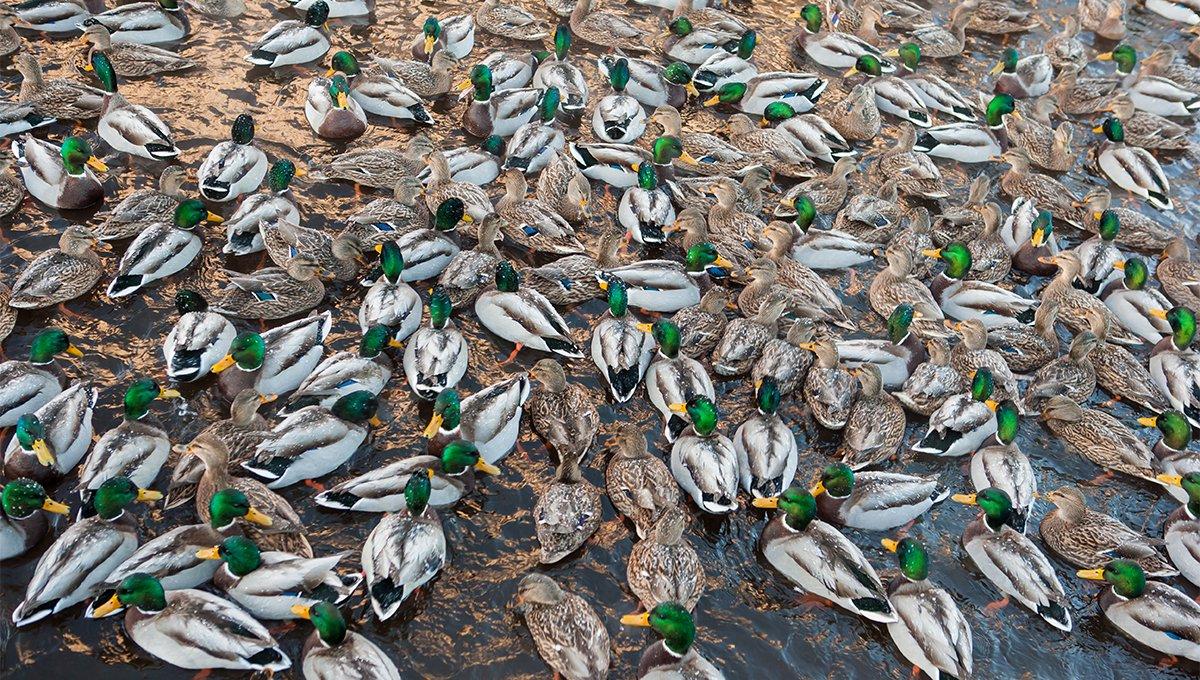Wing-Shooting Fans Say No, But Questions Remain
We hold some truths, to paraphrase Mr. Jefferson, to be self-evident. In the waterfowling world, one such tenet is that birds should be shot while flying, not standing, sitting or swimming (with the exception of cripples).
But when a well-meaning co-worker recently questioned that principle, it made me pause. Why do you have to shoot them in the air? he said. Dead is dead. I let them swim in. Bam. Duck dinner.
He had a point. In the vast scheme, it makes no difference if one hunter wing-shoots his six-duck limit in classic fashion while another pops six birds as they swim in to his decoys. The bottom line is 12 dead ducks. And I'm guessing the ducks don't care how they died.
Further, a pragmatist might point out, the water-swatted ducks likely only have pellets in their heads, making them potentially better table fare. And a historian of our sport would quickly admit that the first North American waterfowl hunters probably didn't waste too many arrows or other projectiles trying to kill flying birds. Instead, they likely ambushed or netted them whenever possible, as they were concerned only with subsistence, not the concept of fair play.
Actually, the idea of wing-shooting any bird is relatively new. Until some time in the 17th century, hunters typically netted or ensnared birds. It wasn't until after the invention of the flintlock that wing-shooting became popular in Europe, and even then, it was practiced almost entirely by nobility. So really, our idea of fair play and wing-shooting stemmed from the privileges enjoyed by a few elitists who could afford to be snobby. I'm just guessing that a French peasant in the 17th century wasn't too concerned about jumping ducks before killing them to feed his struggling family.
Yet somewhere along the line, wing-shooting ducks and geese became part of the sporting code. The practice of shooting standing or swimming birds was labeled with almost vulgar terms, such as sluicing, ground-swatting, ground-pounding, water-swatting or — my favorite — Arkansasing. (Not sure on the origins of that one. Any insights from the Arkansas crowd?) Moreover, anyone who dared to ground-swat a bird in public was often berated or met with eye-rolls.
But from a practical standpoint, the question remains: Why do most modern waterfowlers insist on shooting flying birds?
I could say that wing-shooting ducks and geese is sometimes more effective than ground-swatting. After all, a mallard cupped over your spread, chest exposed, is a better target than a bufflehead bobbing in the chop, with only 1 square inch of vital area (brain) exposed. (Seriously, have you tried to sluice butterballs when it's wavy? You're better off herding cats.) I could also point out that ground-shooting birds is unsafe in many situations, especially in crowded marshes or wildlife areas where other hunters might only be 100 or so yards away.
But the main reason, of course, is that ground-swatting birds, as Gordon MacQuarrie wrote, is a bit rough. That is, killing a flying duck or goose requires much more skill than shooting a motionless target. Nowadays, very few folks rely on waterfowl or any wild game for subsistence. Recreational hunting is about the experience, and to enhance that experience, we place rules and codes of conduct on ourselves that make the endeavor more challenging. Every duck or goose we shoot on the wing is an affirmation that we've developed a good skill set and that the bird at least had a chance to beat us.
Personally, I rarely get that deep when contemplating the subject. I just enjoy wing-shooting much more than ground-swatting. Yeah, I cringe when I miss a tough airborne target, but that's part of the game. I'd rather whiff on a skyrocketing bluebill than water-swat a seemingly hapless ruddy duck swimming through the blocks. Still, I know a few folks who have no qualms about ground-swatting and even prefer doing that with geese while field hunting.
Bottom line: Decide for yourself. Use whatever method you enjoy, provided you're safe and take ethical shots. I might hold you in higher esteem if you wing-shoot six teal versus water-popping them, but that's probably just my inner snob coming out.
(Just don't try to convince me that you're a French peasant. Especially you folks in Arkansas.)
Click here for more Realtree waterfowl hunting content. And check us out on Facebook.







